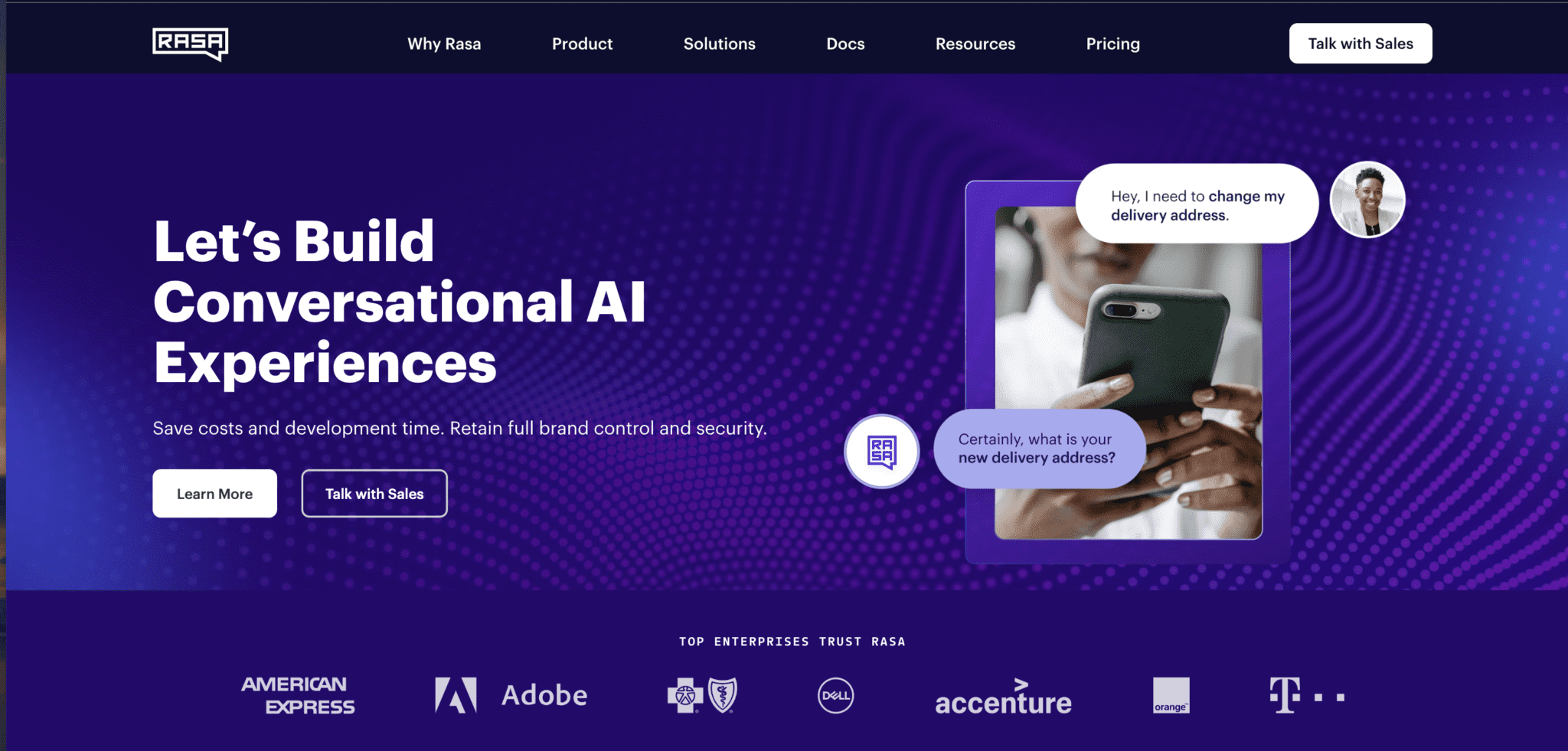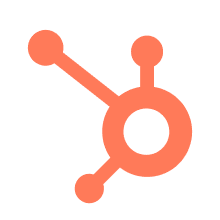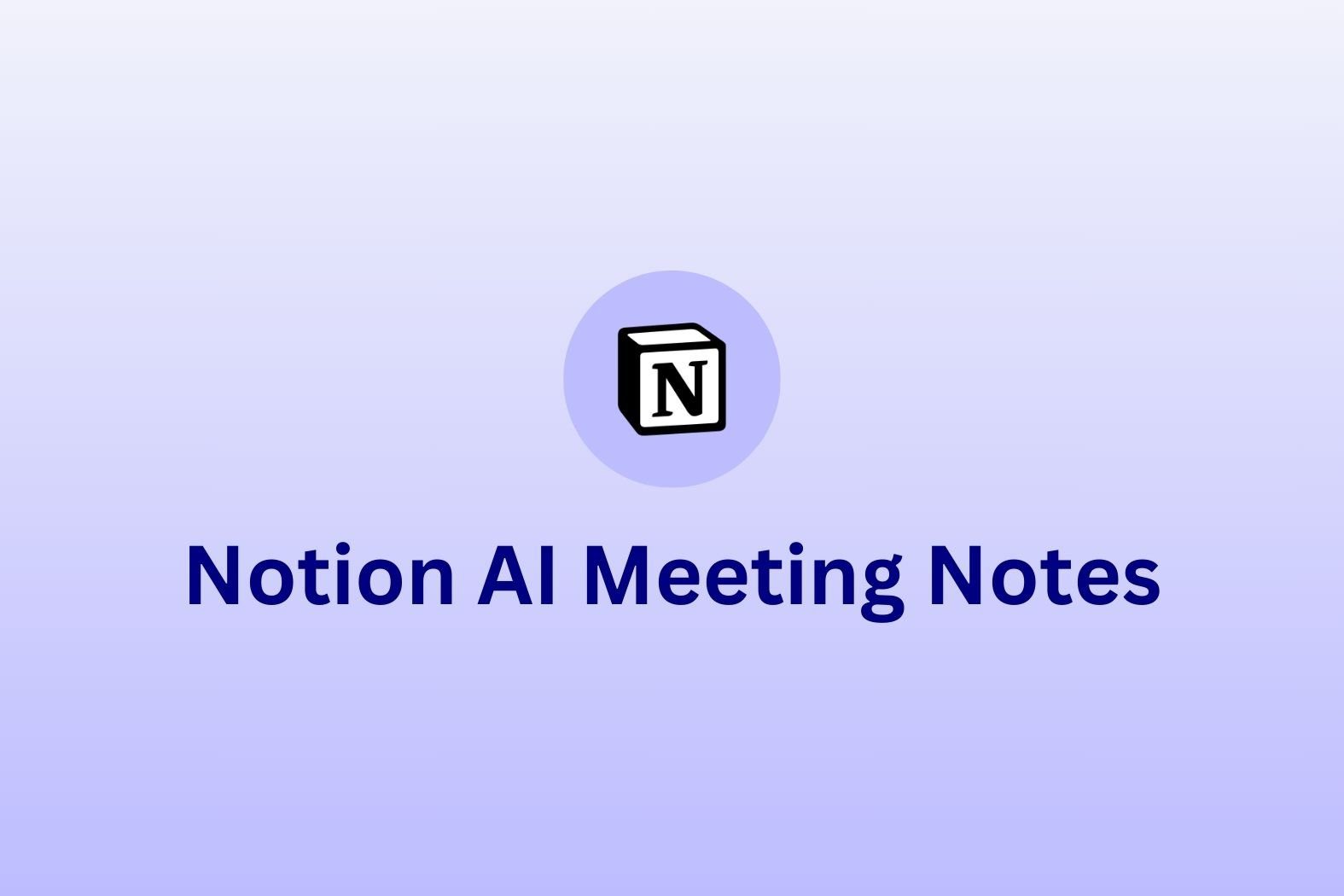AI agents are systems designed to perform tasks or make decisions on behalf of users. These systems range from prescriptive workflows, where tools and actions follow structured paths, to adaptive agents that dynamically decide how to achieve their objectives. Adaptive agents, in particular, analyze their environment, use tools intelligently, and refine their processes over time to improve performance.
AI agents are proving their worth across industries, from organizing meeting notes to identifying sales opportunities and streamlining customer interactions. They take on repetitive or time-consuming tasks, freeing people to focus on creative or strategic work.
Their impact is already clear in industries where precision and consistency are valued, such as sales or project management.
This article explores the key features of AI agents, including how they work, the different types available, and the tasks they’re best suited for. Readers will learn how machine learning and natural language processing give these tools the ability to respond intelligently to changing circumstances. You’ll also discover how businesses can integrate AI agents into existing workflows to make everyday tasks smoother and less time-consuming.
One practical example is tl;dv, an AI agent designed to support meetings. It can transcribe discussions, highlight key points, and organize follow-ups, ensuring that nothing is overlooked. There are also many features on top of this, helping it slot into sales teams, using AI to train, inform, and move deals through a pipeline – this is just for sales.
Tools like this help teams stay focused on decisions rather than documentation.
Whether you’re new to the concept of AI agents or looking for ways to get more from them, this guide will provide clear insights and practical advice. Whether through prescriptive workflows or adaptive agents, these systems are transforming how work gets done. As AI continues to evolve, the line between automation and autonomy will blur, creating opportunities for smarter, more efficient processes.
What is an AI Agent?
An AI agent is a type of software program designed to perform tasks or make decisions on behalf of a user, using artificial intelligence. These agents can often autonomously perceive their environment, analyze data, and take action to achieve specific goals. Unlike traditional software, AI agents are adaptive, learning from interactions and improving over time.
Workflows vs. Agents
While the term “AI agent” is often used broadly, it can be helpful to distinguish between workflows and true agents:
- Workflows are systems where tools and processes follow predefined paths, enabling efficient execution of routine tasks.
- Agents dynamically determine how to achieve their goals, leveraging advanced decision-making to adapt to changing contexts. They operate more independently and flexibly, often combining multiple tools to achieve their objectives.
For example, a workflow might automate meeting scheduling while an adaptive agent analyzes team calendars, prioritizes key stakeholders, and dynamically resolves conflicts in scheduling.
How Do AI Agents Work?
If you are wondering how AI agents work, each one functions through a combination of technologies, with their level of adaptability depending on how these technologies are implemented:
- Prescriptive Workflows: Rely on predefined paths and automation to complete routine tasks efficiently.
- Adaptive Processes: Use machine learning (ML) to dynamically analyze patterns, predict outcomes, and refine decisions. Natural language processing (NLP) adds contextual understanding, enabling more natural interactions.
- Dynamic Decision-Making: Adaptive agents evaluate multiple tools and strategies in real time, deciding how to achieve their goals with minimal human intervention.
Together, these technologies allow AI agents to process vast amounts of information, identify key insights, and act in ways that align with user objectives.
AI Agents vs. Chatbots vs. Virtual Assistants
While AI agents, chatbots, and virtual assistants might all seem very similar, they serve distinct purposes:
- Chatbots: Designed for basic, scripted conversations. They follow predefined rules and typically can’t handle complex tasks or adapt over time. For example, a chatbot on an e-commerce website might help a user track their order or answer FAQs but struggles with more nuanced or unexpected questions.
- Virtual Assistants: Tools like Siri or Alexa focus on personal productivity, answering questions, or performing straightforward actions like setting reminders. For instance, a virtual assistant might play music, check the weather, or send a text message when prompted.
- AI Agents: More advanced and versatile, AI agents combine capabilities like proactive problem-solving, learning from context, and managing multi-step workflows. They can handle dynamic scenarios that require adaptation and nuanced decision-making. For example, an AI agent could monitor a team’s project deadlines, identify potential delays, and automatically reassign tasks or notify stakeholders to ensure progress.
What Can AI Agents Do?
AI agents can assist in various ways across many different job roles and industries, including:
- Project Management: Automating task assignments, tracking progress, and identifying bottlenecks.
- Customer Support: Providing personalized responses, resolving issues, and escalating cases when necessary.
- Data Analysis: Extracting actionable insights from complex datasets.
- Meeting Summaries: Capturing, summarizing, and organizing key points from meetings, making collaboration more effective.
This list isn’t exhaustive, and as AI agents become increasingly ingrained within businesses and industries, there will be many more applications and ways they can support humans and companies as they develop.
How Do AI Agents Make Decisions?
Many people may wonder just how an AI gent will make a decision or a choice. Some of these will be fairly straightforward, but as the questions and scenarios become increasingly more complex, there are more and more ways that the AI learns to make these choices. The simplest way of explaining thi is that AI agents make decisions through:
- Data Collection: Gathering information from the environment or user input.
- Analysis: Using ML algorithms to identify patterns, predict outcomes, and weigh potential actions.
- Action: Selecting and executing the most effective response based on predefined goals and past learning.
Their ability to learn and adapt makes AI agents particularly valuable for tasks requiring ongoing optimization or contextual understanding.
This, again, will continue to develop and is impacted by the input that the AI agent receives. This means that it will evolve and a choice that the AI agent makes in 2025, will not necssarily be the same choice five years into the future.

What Are The Different Types of AI Agents?
AI agents can be categorized into several distinct types with unique characteristics and applications. Understanding these types helps clarify how they operate and what they can achieve. This will again develop and grow as time moves on, technology increases, and the way that AI agents become more integrated within our daily lives.
Simple Reflex Agents
Simple reflex agents are the most basic form of AI agents. They respond directly to inputs using a set of predefined rules without storing any memory or considering the broader context. These agents are best suited for environments that are fully observable and predictable.
Example Use Case: A thermostat that activates heating or cooling based on current temperature readings.
Key Takeaway: While effective for straightforward tasks, these agents lack adaptability and decision-making depth.
Model-Based Reflex Agents
Model-based reflex agents build on the capabilities of simple reflex agents by maintaining an internal model of their environment. This allows them to consider past states and adapt to partially observable environments.
Example Use Case: A robot vacuum that maps out a room while cleaning, avoiding obstacles and ensuring complete coverage.
Key Takeaway: These agents provide more flexibility and are suitable for dynamic, changing conditions.
Goal-Based Agents
Goal-based agents combine an internal model of the environment with a specific objective. They plan actions and evaluate multiple options to determine the best path toward achieving their goal.
Example Use Case: A GPS navigation system that calculates the fastest or most efficient route to a destination.
Key Takeaway: This type of agent is highly effective for tasks requiring strategic planning.
Utility-Based Agents
Utility-based agents go a step further by not only seeking to achieve a goal but also optimizing the process to maximize overall utility. They assign utility values to different outcomes and prioritize actions that deliver the best results.
Example Use Case: A personal assistant that schedules meetings based on priority, availability, and potential conflicts, ensuring minimal disruption and maximum productivity.
Key Takeaway: These agents are ideal for scenarios where trade-offs between competing objectives are necessary.
Learning Agents
Learning agents are unique in their ability to improve over time. They incorporate feedback and new experiences into their knowledge base, enabling them to adapt to unfamiliar situations and enhance their performance.
Example Use Case: An e-commerce recommendation system that tailors suggestions based on a user’s browsing and purchasing history. A boutique apparel store, for instance, can use learning agents to analyze customer preferences and suggest tailored embroidery designs that match individual tastes, improving both personalization and sales.
Key Takeaway: Learning agents are versatile and capable of thriving in complex, evolving environments.
Autonomous Agents
Autonomous agents operate independently, making decisions and executing tasks without direct supervision. They are capable of handling intricate, multi-step processes and adapting to unforeseen challenges.
Example Use Case: A self-driving car that navigates traffic, adheres to regulations, and adjusts its route in real time based on conditions.
Key Takeaway: Autonomous agents are critical in fields like robotics, transportation, and healthcare.
Task-Specific vs. General-Purpose Agents
AI agents can also be divided into either a task-specific and general-purpose category:
Task-Specific Agents: These are designed to excel at a particular function. For example, an AI agent for fraud detection in banking focuses exclusively on identifying suspicious transactions. Task-specific agents are highly efficient within their designated domain but lack versatility.
General-Purpose Agents: These agents are broader in scope, capable of handling diverse tasks across multiple domains. For instance, an AI agent integrated into a smart home system can manage lighting, climate control, and security. General-purpose agents are more flexible but may require extensive training and resources to perform effectively.
AI Agents in Remote and Office Settings
Some AI agents are particularly suited for enhancing productivity in both remote and office environments. For instance, learning agents and autonomous agents can adapt to team dynamics, optimize workflows, and manage tasks seamlessly. These agents may assist in recording and analyzing meetings, providing actionable insights, or ensuring that projects stay on track across distributed teams.
What Are Some Of The Challenges of Using AI Agents?
Despite their numerous benefits, implementing AI agents can be a bumpy road. There will always be a level of teething issues when you’re introducing something new to the workflow, and while using an AI agent can be transformative, it comes with a few caveats. These are typically easily overcome but can take a while to work around and can be temporary bottlenecks in the process.
Cost of Implementation
Some AI agents aren’t cheap – even if they are cost-effective in the long term. The costs can be daunting from initial development to ongoing maintenance, especially for smaller businesses. Think of it as renovating a house; you can’t just throw paint on the walls and hope for the best. It needs to be rolled out planned, considering some of the things that can go wrong.
How to tackle it?
Start small. Many cloud-based platforms let you test the waters without committing to a massive investment. Focus on areas where the payoff is clear—like automating repetitive tasks—and build from there. Some tools are just very good value for money. Make sure to assess what features the AI agent brings to the table and what that value is for that price point.
Data Privacy Concerns
AI agents thrive on data, but with great power comes great responsibility. Customers and regulators alike are demanding transparency and security. Mishandling sensitive information could quickly turn into a PR nightmare. Data is probably your single biggest asset as a comapny, but also your largest vulnerability.
What helps?
Implementing encryption and strict access controls is key. Regular audits and compliance with regulations like GDPR or CCPA can also keep your business on the right track. Don’t just promise data security—prove it.
Integration with Existing Systems
Adding AI to your workflows isn’t always plug-and-play. You might find yourself dealing with clunky integrations, compatibility issues, or processes grinding to a halt. For Adaptive Agents in particular, dynamic systems require a lot of thorough testing to ensure reliability, as their decisions may not always align with human expectations. Additionally, ethical considerations must guide how adaptive agents make decisions in complex scenarios.
How to make it smoother?
Before diving in, evaluate your current systems. Look for AI tools with flexible APIs and prioritize vendors that offer great support. Sometimes, working with experienced partners can mean the difference between a smooth rollout and endless headaches.
Risk of Over-Reliance or Errors
The allure of automation can lead to over-reliance. When something goes wrong, who’s there to catch it? AI agents aren’t perfect, and errors in critical systems can have far-reaching consequences.
Create a technological balancing act
Keep a human in the loop. While AI can handle repetitive tasks, critical decisions still benefit from human oversight. Regularly testing and updating systems ensures they’re running as intended, and having a contingency plan in place never hurts.
How to Create an AI Agent
One of the greatest things about emerging technology is its ability to shape and impact it as it evolves – such as creating your own AI agent.
Creating an AI agent is an exciting process that combines innovation, programming, and strategy. Whether you want to streamline customer service, enhance decision-making processes, or create a personal assistant, following a structured approach can help bring your AI agent to life. Here’s a step-by-step guide:
1. Define the Goal or Task
Before diving into development, clearly outline what you want your AI agent to accomplish. Ask yourself questions like:
- What problem is this agent solving?
- Who will use this agent, and in what context?
- What metrics will define its success?
For instance, an AI agent for customer support may aim to reduce response times and improve customer satisfaction by answering FAQs or processing requests efficiently.
2. Select the Right AI Agent Builder
There are several platforms and tools available to build AI agents. Choosing the right one depends on your goals, technical expertise, and resources. Popular options include:
- OpenAI’s GPT: Ideal for conversational agents that require advanced language understanding and generation. It’s highly versatile and can handle complex, human-like interactions.
- Google Dialogflow: Perfect for building chatbots integrated with Google Cloud. It’s beginner-friendly and supports natural language processing (NLP).
- IBM Watson Assistant: A great business platform that offers extensive analytics and multi-channel deployment.
- Microsoft Bot Framework: A powerful tool for creating bots integrated with Microsoft Azure.
- Rasa: An open-source platform that provides flexibility and customization for developers comfortable with programming.

3. Train the Agent with Relevant Data
Training your AI agent involves feeding it the data it needs to perform its tasks effectively. This could include:
- Domain-specific Data: Ensure your AI knows industry terms, customer preferences, or specific workflows.
- Conversational Datasets: For chatbots, use a dataset of conversations to help the AI understand and respond naturally.
- Custom Intents and Entities: Platforms like Dialogflow and Rasa allow you to define intents (user goals) and entities (specific data points) for more precise responses.
Data should be clean, diverse, and representative of real-world scenarios to ensure your AI agent performs accurately across various situations.
4. Test and Refine for Specific Use Cases
Testing is crucial for ensuring your AI agent meets its objectives. Simulate interactions to identify errors, inconsistencies, or areas needing improvement. Focus on:
- Accuracy: Does the agent understand queries and provide correct responses?
- Speed: Is it delivering results promptly?
- User Experience: Is the interface intuitive and responses engaging?
Iterative testing and refinement help fine-tune your AI agent, making it more effective and reliable for real-world applications.
What Are Some Learning Resources for Building AI Agents?
Whether you’re a beginner or an experienced developer, numerous resources are available to enhance your skills:
Online Courses and Certifications
- Coursera: Offers courses like “AI for Everyone” and “Building Chatbots with Dialogflow.”
- Udemy: Provides affordable tutorials on platforms like Rasa and GPT integration.
- edX: Features in-depth programs such as “Artificial Intelligence Professional Certificate” by IBM.
Free Resources
- OpenAI Documentation: Comprehensive guides for using GPT models.
- Dialogflow Tutorials: Free resources on Google Cloud’s platform.
- GitHub: Open-source projects to explore and modify.
Community Support
- Reddit’s r/MachineLearning: Connect with developers and join discussions.
- Stack Overflow: Seek advice and troubleshoot coding issues.
- Engage with AI-focused groups on platforms like Discord and Slack to connect with enthusiasts and professionals.
What Are AI Agents for Meetings?
AI agents help ensure that meetings are well-documented and productive. One of their standout features is their ability to produce summaries that highlight the main points of discussion, decisions made, and follow-up actions. This ensures every participant leaves the meeting with a clear understanding of what’s next, even if some details were missed during the session.
Real-time note-taking and transcription are other game-changers. Participants no longer need to split their attention between contributing to discussions and recording information. AI agents provide accurate, searchable records of discussions, which are especially helpful for teams working across different time zones or managing complex projects.
For teams dealing with hybrid or remote setups, these tools foster better collaboration. Meetings become less about administrative tasks and more about genuine discussion and decision-making. To dive deeper into these advantages, explore our AI Agents for Meetings article.
What Are AI Agents for Sales?
In sales, efficiency and timing are particularly critical. AI agents for sales can accelerate lead generation by analyzing diverse datasets, such as customer behavior on websites or email engagement. This enables them to identify high-potential leads and prioritize them for follow-up. By taking over repetitive tasks like drafting outreach emails or scheduling initial calls, these tools save valuable time for sales teams.
Beyond lead generation, AI agents enhance CRM systems with real-time insights. For example, they can identify trends in customer preferences or flag opportunities for upselling. This ensures sales professionals have the most relevant data at their fingertips, allowing for more personalized and impactful customer interactions.
With automated follow-ups and detailed analytics, AI agents help sales teams focus on relationship-building and closing deals. Their capacity to streamline operations makes them a must-have for modern sales strategies. For a more detailed exploration, visit our AI Agents for Sales article.
What Are AI Agents for Project Management?
Project managers face the challenge of coordinating multiple moving parts. AI agents simplify this by automating task assignments based on team members’ expertise and availability. This ensures work is evenly distributed and tailored to individual strengths, promoting productivity.
Tracking project progress is another strength of AI agents. They monitor timelines, flag potential bottlenecks, and provide real-time updates, allowing teams to address issues before they escalate. Automated reminders ensure deadlines are met without constant oversight, reducing the administrative burden on managers.
AI agents make it easier to focus on strategic goals by handling routine tasks efficiently. Whether managing small teams or large, complex projects, their role in fostering seamless collaboration is really quite transformative and become ever more important.
What Are AI Agents for Customer Success?
Delivering exceptional customer experiences often requires a blend of personalization and proactive problem-solving. AI agents excel in these areas by analyzing customer data to anticipate needs and tailor responses. For instance, they can recommend specific resources or solutions based on past interactions, creating a more engaging experience.
AI agents also play a vital role in issue resolution. They quickly address common queries, such as troubleshooting connectivity issues or resetting passwords. They can escalate cases to human agents for more complicated concerns, ensuring a smooth handoff with full context provided. This minimizes customer frustration and ensures faster resolutions.
By automating routine support, AI agents free up human teams to focus on building long-term relationships and identifying opportunities for additional value.
What Are AI Agents for Small Businesses?
For small businesses operating on tight budgets and limited manpower, AI agents offer transformative potential. One popular application is in scheduling, where they handle appointment bookings, send automated reminders, and manage rescheduling, all without human intervention. This ensures businesses can offer reliable services while minimizing no-shows.
Another area where AI agents excel is invoicing. They streamline the creation and tracking of invoices, sending payment reminders and automating follow-ups for overdue accounts. These tools reduce manual effort and help maintain steady cash flow, which is vital for small operations.
In marketing, AI agents analyze customer behavior to create targeted campaigns. They can segment audiences based on preferences and purchasing patterns, allowing businesses to deliver more effective messaging. This level of insight and automation helps small businesses compete with larger firms.
By automating these essential tasks, AI agents enable small businesses to operate more efficiently, leaving owners free to focus on growth and innovation.
How To Get Started with AI Agents
AI agents simplify processes and unlock efficiencies across various applications. Take, for instance, tl;dv, a platform designed to meet productivity. It offers tools for real-time transcriptions, automated summaries, and shareable highlights, making meeting follow-ups effortless. If you are interested in dipping a toe in the world of AI agents, tl;dv offers a freemium model with plenty of features to test and trial.
The implementation process for AI agents is straightforward. Most platforms are designed with user-friendly interfaces, requiring little technical expertise. In fact, setting up an AI meeting assistant like tl;dv often takes just a few minutes, seamlessly integrating into your existing workflow to immediately enhance your operations.
If you’re new to AI tools, identifying one repetitive task or workflow that consumes too much time is a great starting point. Implementing an AI solution for that single area lets you quickly experience the benefits, such as saved time or better accuracy, and provides a clear use case to build on.
Accessible and intuitive, AI agents are a practical way to improve productivity without requiring advanced technical skills. Start with one tool, expand as needed, and watch how these technologies transform your work.





